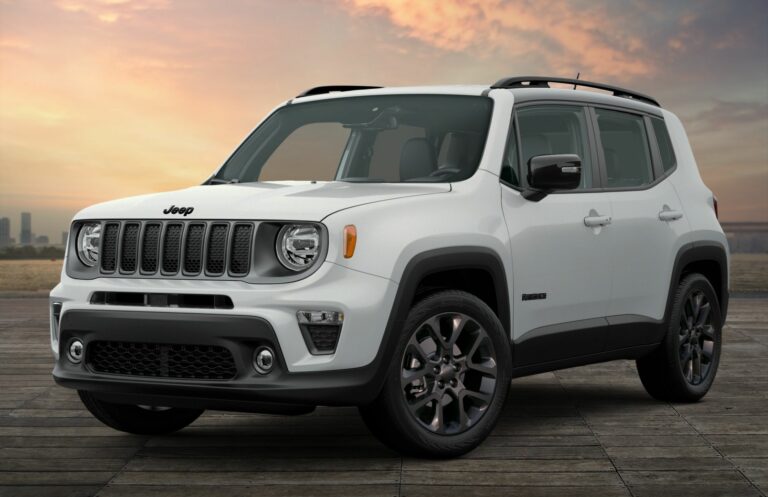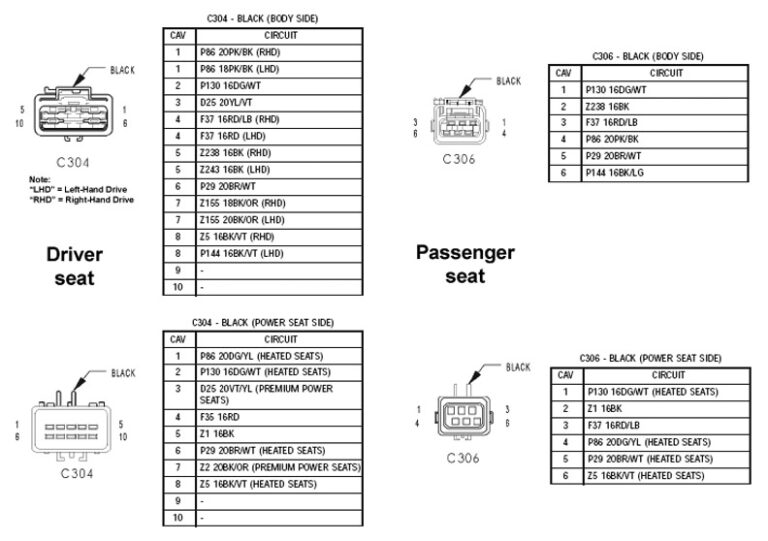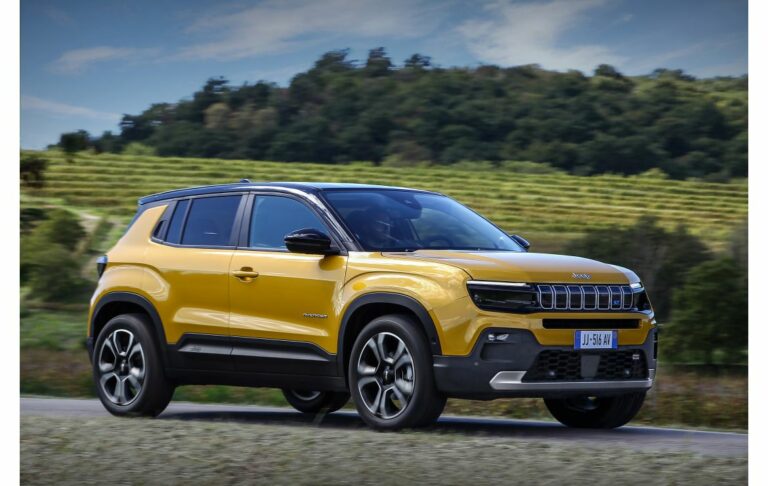Jeep Cherokee 1984 For Sale: Your Guide to Owning an American Icon
Jeep Cherokee 1984 For Sale: Your Guide to Owning an American Icon jeeps.truckstrend.com
Introduction: Discovering the Genesis of a Legend
The year 1984 marked a pivotal moment in automotive history with the debut of the Jeep Cherokee (XJ) – a revolutionary vehicle that effectively invented the modern Sport Utility Vehicle (SUV) as we know it. Unlike its truck-based predecessors, the 1984 Cherokee introduced a unibody construction, making it lighter, more fuel-efficient, and surprisingly agile for its rugged capabilities. This innovative design blended the utilitarianism and off-road prowess expected of a Jeep with the comfort and drivability of a passenger car, creating a segment that would dominate the automotive landscape for decades.
Jeep Cherokee 1984 For Sale: Your Guide to Owning an American Icon
Today, nearly four decades later, the 1984 Jeep Cherokee remains a highly sought-after classic. For enthusiasts, collectors, and those simply seeking a slice of automotive Americana, finding a 1984 Jeep Cherokee for sale isn’t just about acquiring a vehicle; it’s about investing in a legacy. It’s a testament to timeless design, enduring utility, and a community passionate about keeping these pioneering machines on the road, whether for daily commutes, weekend adventures, or full-blown restoration projects. This comprehensive guide will navigate you through everything you need to know about purchasing and owning a 1984 Jeep Cherokee.
The Enduring Appeal of the 1984 Jeep Cherokee
The 1984 Jeep Cherokee (XJ) stands out for several compelling reasons, solidifying its status as a desirable classic. Its initial launch introduced a compact yet surprisingly spacious vehicle that defied conventional wisdom for SUVs of the era.
Key Features and Design Philosophy:
At its core, the 1984 Cherokee’s revolutionary unibody chassis was its most significant differentiator. This design, where the body and frame are one integrated unit, offered superior rigidity, reduced weight, and improved ride quality compared to traditional body-on-frame trucks. Despite its car-like comfort, it retained Jeep’s legendary off-road capability thanks to solid axles (Dana 30 front, Dana 35 rear – though some rare early models might have AMC 20 or Dana 44 rear) and robust four-wheel-drive systems.
Initial Powertrain Options:
The inaugural 1984 models offered a choice of two engines:
- 2.5L AMC Inline-4: A robust and relatively simple four-cylinder engine, offering adequate power for daily driving and reasonable fuel economy.
- 2.8L GM V6: A carbureted V6, licensed from General Motors, intended to provide more power. While smoother than the four-cylinder, it proved to be less reliable and less powerful than later engine offerings.

Why It’s Desirable Today:
- Classic Aesthetics: The clean, boxy lines of the early XJ Cherokees are iconic and have aged gracefully, embodying a rugged, no-nonsense appeal.
- Off-Road Prowess: Even stock, the 1984 Cherokee is surprisingly capable off-road. Its compact size, short overhangs, and solid axles make it a formidable trail machine, easily enhanced with aftermarket modifications.
- Customization Potential: The XJ platform is a blank canvas for modifications. Lift kits, larger tires, engine swaps (especially the later 4.0L I6), and armor upgrades are common, allowing owners to tailor their Cherokee to specific needs.
- Reliability (with maintenance): While the 2.8L V6 can be problematic, the 2.5L I4 and the overall mechanical simplicity of the early XJ make it a relatively easy vehicle to maintain for those with basic mechanical skills.
- Community Support: A vast and active community of XJ owners provides invaluable resources, advice, and camaraderie.
![]()
Whether you’re looking for a nostalgic cruiser, a capable off-road project, or a unique daily driver, the 1984 Jeep Cherokee offers a blend of character, capability, and timeless design that few other vehicles can match.
What to Look For When Buying a 1984 Jeep Cherokee
Purchasing a nearly 40-year-old vehicle, especially one designed for rugged use, requires a thorough inspection. Here’s a detailed guide on critical areas to examine when considering a 1984 Jeep Cherokee for sale.
1. Rust and Body Integrity
This is often the most significant factor determining an XJ’s lifespan.
- Rocker Panels: Check thoroughly, especially behind the front wheels. These are notorious rust traps.
- Floorboards: Inspect under the carpets, both front and rear. Water leaks and road grime can cause severe rot.
- Frame Rails (Unibody "Frame"): Look underneath the vehicle for signs of severe rust, cracks, or previous shoddy repairs. Pay attention to the areas where the control arms attach.
- Rear Quarter Panels & Wheel Wells: Rust often appears around the wheel arches and behind the rear wheels.
- Door Sills and Hatch: Check seals and surrounding metal for rot.
2. Engine and Drivetrain
- 2.5L AMC I4: Generally reliable. Listen for excessive ticking, knocking, or smoke from the exhaust. Check for oil leaks (rear main seal is common but not always critical).
- 2.8L GM V6: Be cautious. These engines are known for head gasket failures, oil leaks, and being underpowered. Many have been swapped out over the years. If present, check for milky oil, coolant in oil, or excessive white smoke.
- Transmissions:
- Manual (Borg-Warner T4/T5): Check for smooth shifting, no grinding, and proper clutch engagement.
- Automatic (GM THM-700R4): Check fluid level and color (should be red, not brown or black). Listen for harsh shifts, slipping, or delayed engagement.
- Transfer Case (NP207): Ensure 2WD, 4-High, and 4-Low engage smoothly without grinding. Check for leaks around the seals.
- Axles (Dana 30 Front, Dana 35 Rear): Look for fluid leaks at the differential covers and pinion seals. Check U-joints on the driveshafts and front axle shafts for play or clicking noises during turns.
3. Suspension and Steering
- Leaf Springs (Rear): Check for sagging, which is common. Look for broken leaves or worn bushings.
- Coil Springs (Front): Less prone to sagging but check for broken coils or signs of severe bottoming out.
- Control Arm Bushings: Inspect both upper and lower control arms for cracked or missing bushings, which can lead to clunking sounds and poor handling.
- Tie Rod Ends and Ball Joints: Check for excessive play in the steering wheel and front end.
- Steering Box: Look for leaks and excessive play.
4. Electrical System
- Test all lights (headlights, taillights, turn signals, brake lights).
- Check all gauges (fuel, temperature, oil pressure, voltmeter).
- Verify wipers, horn, radio, and power windows/locks (if equipped) function correctly. Old wiring can become brittle.
5. Interior Condition
- Seats: Check for tears, stains, and bolster wear.
- Headliner: Sagging headliners are very common.
- Dashboard: Look for cracks, especially around the speaker grilles.
- HVAC: Test heating and air conditioning (if equipped and functional).
6. Documentation and History
- Always ask for maintenance records. A history of regular oil changes and repairs is a good sign.
- Ensure the title is clear and matches the VIN on the vehicle.
- Ask about any accidents or major repairs.
Tips for a Successful Purchase and Ownership
Buying a classic Jeep Cherokee can be a rewarding experience, but a smart approach is key.
Before You Buy:
- Set a Realistic Budget: Beyond the purchase price, factor in immediate repairs, routine maintenance, and potential upgrades. An older vehicle will always require ongoing attention.
- Perform a Pre-Purchase Inspection (PPI): If you’re not mechanically inclined, pay a trusted mechanic (ideally one familiar with older Jeeps or off-road vehicles) to perform a thorough inspection. This small investment can save you thousands later.
- Research Specific Models/Trims: While the ’84 had fewer trim levels (like Pioneer, Chief), knowing what was standard or optional helps you assess value.
- Test Drive Thoroughly: Drive at various speeds. Listen for unusual noises (clunks, squeaks, grinding). Test the brakes for pulling or sponginess. Engage 4WD if possible.
During Ownership:
- Embrace the "Project" Aspect: Even a well-maintained 1984 Cherokee will have quirks and require attention. View it as a rolling project that offers continuous learning and satisfaction.
- Regular Maintenance is Crucial: Follow a strict maintenance schedule for oil changes, fluid checks, greasing U-joints, and inspecting belts and hoses.
- Join the Community: Online forums (e.g., NAXJA, Cherokee Forum) and local Jeep clubs are invaluable resources for advice, troubleshooting, and finding parts.
- Parts Availability: Mechanical parts are generally abundant due to the XJ’s popularity and long production run (through 2001). However, specific trim pieces, interior components, or unique 1984-only parts can be harder to source. Aftermarket support for upgrades is excellent.
- Learn to DIY: Many common repairs on an XJ are manageable for the average enthusiast with a good set of tools and a service manual. This saves money and deepens your understanding of your vehicle.
Common Challenges and Solutions
Owning a 1984 Jeep Cherokee comes with its unique set of challenges, but most have well-established solutions.
- Rust: The biggest enemy.
- Solution: For minor surface rust, grinding, rust conversion, and paint can work. For significant structural rust (rockers, floorboards), professional welding and fabrication are often required. Regular cleaning and undercoating can prevent future issues.
- Underpowered 2.8L V6: Many owners find this engine lacking.
- Solution: The most popular upgrade is an engine swap to the later 4.0L AMC Inline-6 (which debuted in the XJ in 1987). This is a relatively straightforward swap for experienced DIYers or shops, as the engine bay is designed for it. Other swaps (e.g., Chevy 350) are also possible but more complex.
- Sagging Suspension: Old leaf springs lose their arch.
- Solution: Replacement leaf springs (often heavy-duty or lift springs) and new front coil springs are common upgrades that restore ride height and improve handling.
- Electrical Gremlins: Aging wiring and connections.
- Solution: Meticulous tracing of circuits, cleaning grounds, replacing worn connectors, and sometimes even replacing sections of the wiring harness can resolve issues. A factory service manual with wiring diagrams is invaluable.
- Finding Obscure Parts: While mechanicals are easy, unique early-XJ interior or exterior trim can be tough.
- Solution: Salvage yards, online XJ enthusiast groups (buy/sell sections), and specialized Jeep parts suppliers are your best bet. Sometimes, adaptation from later XJ models is possible.
Jeep Cherokee 1984 For Sale: Price Guide
The price of a 1984 Jeep Cherokee can vary significantly based on its condition, mileage, engine, geographic location, and any modifications it has undergone. Generally, finding one in truly pristine, original condition is rare, and prices reflect the spectrum from project cars to well-preserved examples.
| Condition Category | Estimated Price Range (USD) | Key Characteristics & Considerations |
|---|






